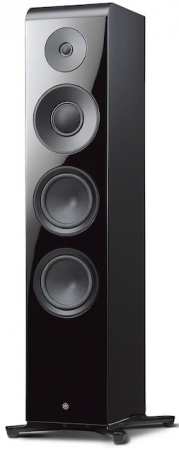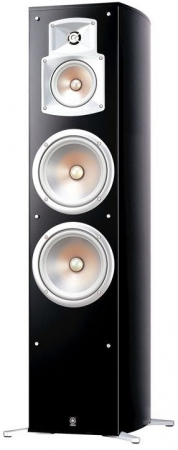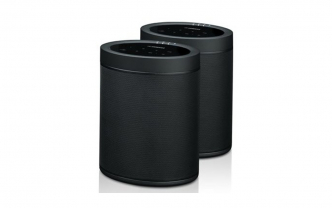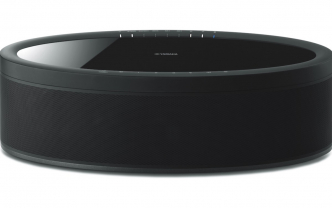Anatomy of a Home Theater Speaker
Demystifying the jargon.
Achieving home theater bliss is almost entirely dependent on speakers. But there’s so much jargon, so many form factors. Two-way, three-way, crossovers, tower speakers, bookshelf speakers, subwoofers, sound bars … what does it all mean?
Here are the answers to these questions — answers that will help you achieve great performance and find the right speakers for your home theater.
Basic Speaker Components
The basic components of a speaker are:
– Drivers. There are three kinds of home theater speaker drivers: tweeters to reproduce high frequencies; mid-range speakers to reproduce vocals, dialogue and most instruments; and woofers to reproduce low frequencies — bass and “feel” frequencies such as rumble. Whether a speaker is two-way or three-way depends upon how many drivers it has. A two-way speaker will typically contain a tweeter and a woofer, while a three-way speaker contains an additional driver to handle mid-range frequencies.
In the illustration below (a cross-section of a three-way speaker), you can see the tweeter driver on top, a mid-range driver below it, and two woofer drivers on the bottom.
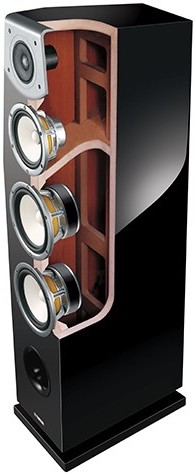
– Crossover. This is a device installed inside the speaker cabinet that routes the different frequencies that make up a sound to the appropriate drivers.
– Cabinet. A boxed speaker will have a cabinet that houses the drivers and crossovers. This cabinet additionally affects the overall sound quality of the speaker based on the materials used and cubic volume. In-ceiling and in-wall speakers typically use the wall cavity as the “cabinet.”
Home Theater Speakers vs. Music Speakers
Will any speaker work in a home theater system? The short answer is … not really. A typical stereo speaker designed for music has a different intention than a home theater speaker. The intent of a music speaker is to disappear and give you the feeling that you are in a concert hall or live performance — in other words, it’s designed to create a soundstage that seems bigger than the box that houses the speaker drivers.
A home theater speaker is meant to do the complete opposite — it is intended to be directional. We want to feel that Top Gun fighter plane roar from the front left of the room to the rear right of the room as it moves across the screen. We do not want those speakers to “disappear” … well, perhaps visually we do (we don’t want them serving as a distraction), but in terms of audio, we want them to be present at specific locations within the room.
Another important factor that distinguishes a home theater speaker from a music speaker is the design of its front face, called the baffle. Music speakers tend to offer a wider baffle to help create that wide soundstage, while home theater speakers benefit from a narrow baffle to create more directionality.
The Importance of Consistency
Speakers come in a variety of shapes and sizes. Which form factor is best for you?
Before we get into the nitty-gritty of this, I’d like to make the recommendation that each speaker in your home theater system be from the same manufacturer and have at least the same general characteristics for consistent tone and quality. This will ensure that the Fast and Furious muscle car sounds the same as it circles you from speaker to speaker. You don’t want it to roar like a high-performance vehicle in the front channels and chug like a go-cart as it moves to the side and rear speakers.
Tower Speakers
The pinnacle of performance is typically found in a floor-standing “tower” speaker like the Yamaha NS-2000A. These offer full-range performance, amazing dynamics and incredible clarity. If they’re a little outside your budget, Yamaha NS-777 speakers are a great alternative.
Bookshelf Speakers
What if your room cannot support the physical footprint of five or seven tower speakers? In that case, your next best option is smaller bookshelf models like the Yamaha NS-333, perhaps paired with a NS-C444, which is a bookshelf speaker that’s specifically designed to handle the center channel — a channel that normally carries mostly dialog.
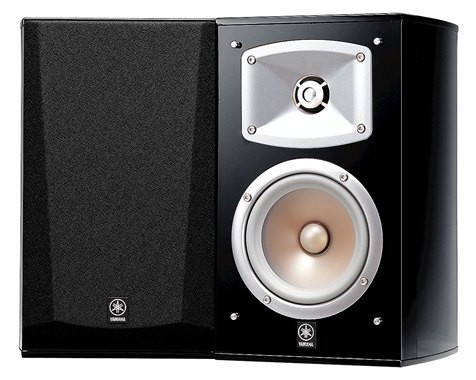
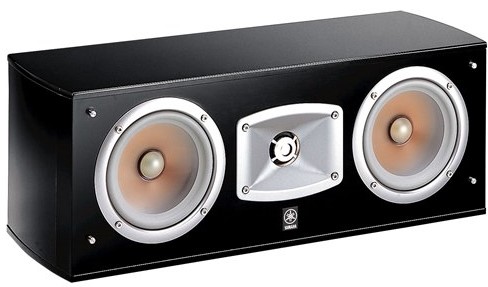
Bookshelf speakers can be used to carry the left and right front channels as well as acting as rear surrounds. If used as rear speakers, they can either sit on stands or in a cabinet. A set of bookshelf speakers can give you great quality sound in a smaller footprint, although there is some sacrifice when shrinking your cabinet size. When you move from a full-range three-way speaker to a two-way bookshelf speaker, you are going to lose the bottom octave and the part of the soundtrack where all of those great chest-thumping effects lie — things like rumbling tanks, explosions and planes.
The Subwoofer
So how do we get that back? The answer is simple: Add a subwoofer (or two). The Yamaha NS-SW100, for example, is a great option for a typical large family room. Keep in mind that bass travels until it hits a boundary. If you have a home with an open floor plan, you have a lot of volume to fill. A dinky subwoofer is simply not a great option in a room like that.
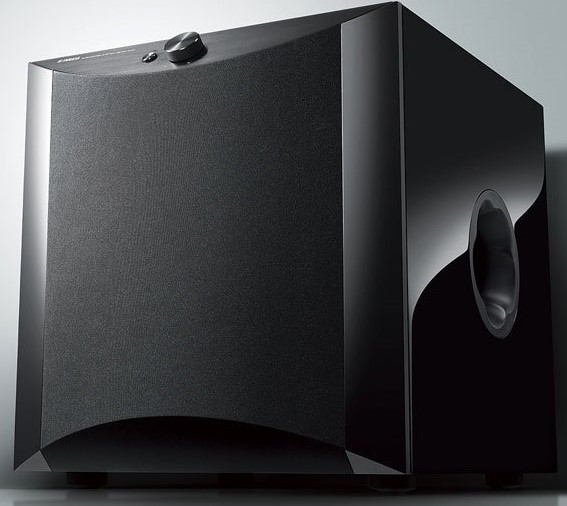
Wireless Speakers
Wireless speakers allow you to create a surround sound setup without the bother of having to run speaker wires around the room. Instead, it uses Wi-Fi to send audio signal from appropriately equipped AV receiver such as the Yamaha RX-V6A, which is MusicCast-enabled. (MusicCast is the Yamaha wireless multiroom audio solution, and its family of products includes not only speakers and AV amplifiers but sound bars and turntables too.)
Yamaha offers two wireless speaker options: the MusicCast 20, and the larger MusicCast 50, both of which incorporate unique designs (different from the bookshelf speaker) due to their need to be versatile. You can pair two MusicCast 20s together to serve as rear left and right speakers or use a single MusicCast 50 as a rear surround speaker. These speakers can also be easily moved to different rooms altogether (even out on your patio!) so you can listen to stereo music throughout your whole house.
The Sound Bar
And then there’s the ubiquitous sound bar. This is a very popular option as it is cost-effective, easy to incorporate into any room, and solves a big problem of the generally really poor quality speakers in most of today’s flat panel TVs. A great option in this category is the Yamaha True X Bar 40A. This all-in-one sound bar has built-in subwoofers and offers Dolby Atmos simulated surround sound as well as Yamaha Clear Voice technology for dialog enhancement — it can even be voice-controlled by Alexa. It’s meant to be a simpler version of a full-blown surround system that is both affordable and easy to implement into any system. No, it doesn’t offer the full range of sound that you will get with a great floor-standing or bookshelf speaker system, but a sound bar is a great solution to improve the sound on any TV.

Click here for more information about Yamaha home theater speakers.
Click here for more information about Yamaha subwoofers.
Click here for more information about Yamaha sound bars.










